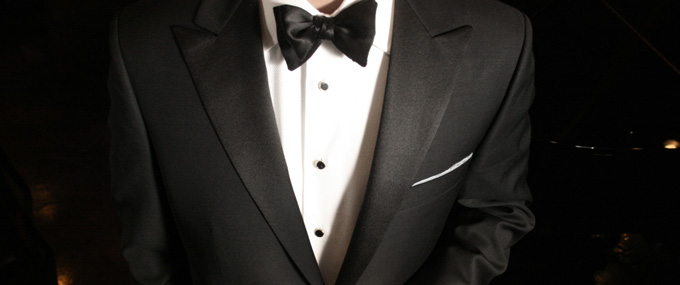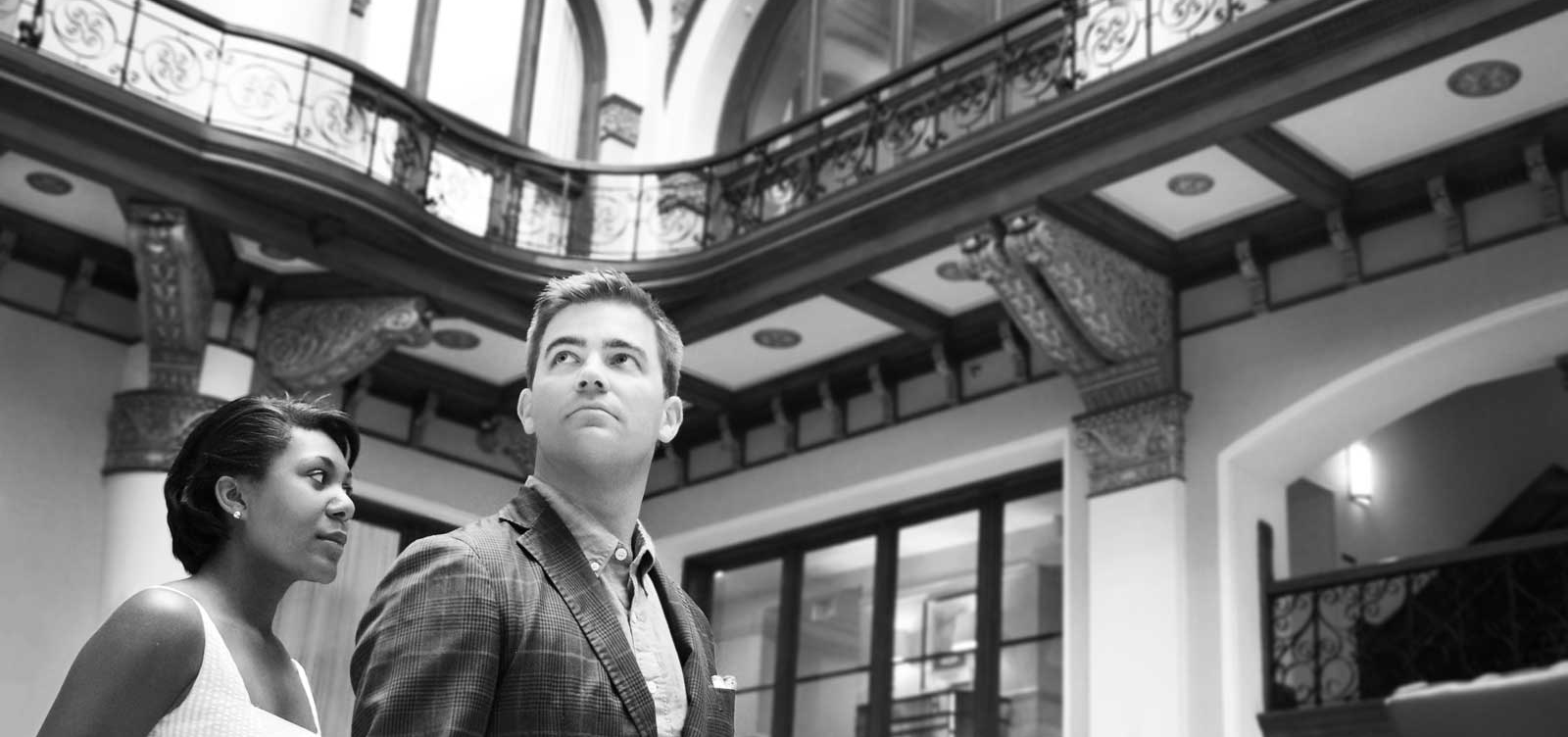
The good news: black tie as a dress for formal occasions experienced somewhat of a comeback over the last decades. The bad news: no other dress is as misunderstood and misinterpreted as the tuxedo, or smoking jacket. Therefore, we have to clarify a few fundamentals:
1. No Tuxedo before 6pm.
The rule is simple. Amy Vanderbilt, the etiquette authority from New York City commented on the questions of tuxedo at weddings with the words “A tuxedo, essentially a frivolous garment, should not be worn in church for any reason. For a night wedding, even at home, full dress (a.k.a. white tie) should be worn by members of the wedding party, unless they prefer the alternative of dark sack suits.” Emily Post, in her fourth edition of Etiquette, confirmed Vanderbilt’s opinion. However, Post allowed white dinner jackets for smaller, less formal evening weddings.
2. Colors: less is often more.
Especially in the 50ies, tuxedos have become more and more flippant. The rule is simple: unless you are in a Broadway musical asking Sandra Dee to prom, your tuxedo is black, and your shirt is white. A little more leeway can be given with the bowtie, although a single color is enough. Polka dots, stripes, or the little Vineyard Vines whales are perfect for your next picnic, but not for your black tie event. Nevertheless; black tie is called black tie for a reason.
3. Accessories are key.
In the accessories’ department, we want to focus on those items: shoes, cummerbund, suspenders, cufflinks, buttons, and pocket square. We have covered the bowtie under point 2 – so hopefully, there is no need to be repetitive…
The shoes: traditional tuxedo shoes are patent leather and they have laces.
Cummerbund: the cummerbund is an alternative to the vest. Originally, the cummerbund was a military item and when adopted by the civilian world, it was always black. The bowtie usually matched the trousers and not the cummerbund. However, with a black cummerbund and bowtie one can never go wrong.
Suspenders: to be very clear: Yes, one can wear both the cummerbund AND the suspenders. The suspenders (or braces, as our English friends call them) should be worn under the cummerbund.
Cufflinks and buttons: often times, cufflinks and buttons – if the buttons have to be purchased separately – come in sets. If so, simple round buttons and cufflinks in black should be the go-to option. However, some tuxedo shirts come buttoned and there is certainly nothing wrong with it – if it is a true tuxedo shirt. The difference? If there are normal buttons on the shirt, one should not be able to see them. In fact, they should be hidden behind a seam. In this case, there is a little more leeway with cufflinks, although simple black, silver, or gold knots or plaques are the best and most timeless options.
Pocket square: Although I am a “yes person” in this very question, some might argue that tuxedos do not require a pocket square in the first place. While it undoubtedly adds a finishing touch to the attire, a pocket square should be kept within the normal coloring schemes of the whole outfit, preferably white (it’s black tie, after all…). The red option seem to have its origin in the era of the post WWII society, where people stopped wearing carnations as a color- and playful highlight.
As long as these fundamentals are followed, tuxedos can offer some opportunities for individual style. While there still seems to be a hierarchy of lapel forms (shawl, peak, notch), tuxedo come in various forms and fabrics. Savile row tuxedos, as an example seem to have more peak lapels, while Italian products often times preferred the classic shawl lapel, which – due to its sleek form – is more in line with Italian traditions of more tailored cuts.
Back to Style: by Occasion


2 thoughts on “Black Tie (Semi Formal)”
Comments are closed.